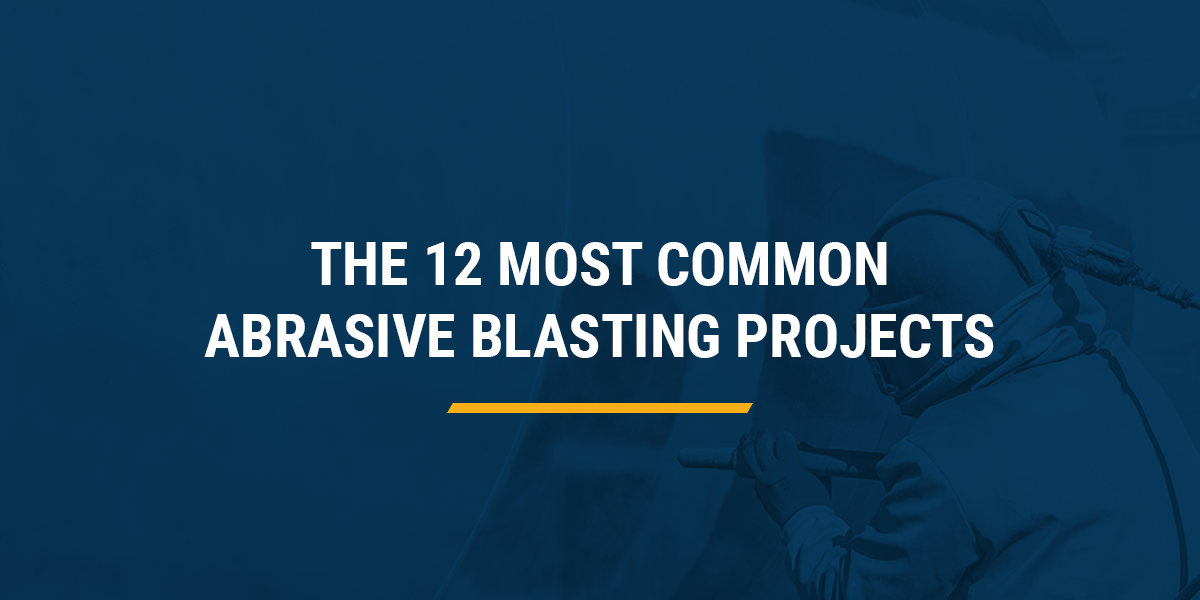
The 12 Most Common Abrasive Blasting Projects
May 09, 2023 When it comes to surface preparation, cleaning, or maintenance, abrasive blasting is a powerful and widely used technique across many industries. Whether you're working with steel, concrete, wood, or even delicate materials like plastic, this method can help you achieve a clean, smooth, and ready-to-finish surface. From industrial applications to commercial projects, abrasive blasting plays a key role in improving the quality, durability, and aesthetics of surfaces. There are several types of abrasive blasting, including air blasting, wet blasting, vacuum blasting, and centrifugal blasting. Each has its own advantages and is suited for different tasks. The choice of media—such as sand, glass beads, dry ice, or walnut shells—depends on the material being treated and the desired outcome. This flexibility makes abrasive blasting an essential tool for both large-scale manufacturing and smaller, specialized projects. In this article, we’ll explore the 12 most common abrasive blasting projects that businesses and professionals encounter every day. Whether you're looking to prepare a surface for painting, clean food processing equipment, or remove graffiti from a building, there's likely an abrasive blasting solution that fits your needs. **1. Painting Preparation** Before applying paint, especially on metal surfaces like steel, it's crucial to ensure the surface is clean and free of contaminants. Abrasive blasting helps remove rust, old coatings, and debris, creating a smooth base for better paint adhesion. This process not only improves the appearance but also extends the life of the painted surface. **2. Food Service Equipment Maintenance** In the food industry, cleanliness is non-negotiable. Abrasive blasting using safe, organic materials like dry ice or corn cobs is ideal for cleaning stainless steel equipment without damaging the surface. It’s effective at removing baked-on grease, food residue, and other stubborn stains while maintaining hygiene standards. **3. Architectural Surface Preparation** Architectural elements such as beams, columns, and decorative pieces often require precision and care. Abrasive blasting is used to clean and prepare these surfaces for coatings or restoration. It’s gentle enough to avoid damaging the underlying structure while still delivering a high-quality finish. **4. Concrete and Wooden Surface Restoration** For softer materials like concrete and wood, abrasive blasting techniques like soda or dry ice blasting offer a non-damaging way to restore surfaces. These methods are excellent for preparing surfaces for staining, painting, or sealing, all while preserving the integrity of the original material. **5. Warehouse Cleaning** Large warehouses can accumulate dirt, grime, and residue over time. Dry or wet abrasive blasting is an efficient way to deep clean structural components, machinery, and walls. Portable blast systems allow for targeted cleaning, making it easier to maintain a clean and safe environment. **6. Railroad Car Maintenance** Railroad cars are frequently exposed to various substances, including hazardous materials. Regular abrasive blasting ensures that the interiors remain clean and free from harmful residues. It also prepares the car for repainting, helping to maintain its condition and extend its lifespan. **7. Bridge Maintenance** Bridges require frequent cleaning and maintenance due to exposure to weather and traffic. Abrasive blasting is commonly used on steel and concrete bridges to remove corrosion, old coatings, and debris. This helps prevent further damage and ensures the safety and longevity of the structure. **8. Component Surface Preparation and Etching** Abrasive blasting is often used to prepare surfaces before etching or powder coating. It creates a uniform texture that enhances adhesion and improves the final finish. Materials like silicon carbide are ideal for heavy-duty applications and can be used for polishing, lapping, and more. **9. Plastic Injection Mold Cleaning** Mold cavities in plastic injection molding can become clogged with hardened residues. Abrasive blasting is a safe and effective way to clean these molds without damaging them. It’s also useful for removing anti-corrosion coatings and deflashing parts, ensuring consistent production quality. **10. Casting Sanding** Foundry sand is often used in sand-casting processes. Abrasive blasting helps clean and maintain these molds, improving visibility and reducing labor costs. Specialized media like Starblast Ultra is suitable for heavy-duty tasks like paint removal and rust elimination. **11. Bearings, Shafts, and Gears Improvement** Shot peening, a type of abrasive blasting, is used to improve the fatigue resistance of metal parts like bearings, shafts, and gears. This technique increases the lifespan of these components by inducing compressive stresses on the surface. **12. Graffiti Removal** Graffiti can be unsightly and difficult to remove. Organic abrasives like corn cobs or walnut shells provide a safe and eco-friendly alternative to harsh chemicals. They effectively remove graffiti while preserving the surface underneath, making them ideal for public and commercial areas. If you're looking to enhance your surface finishing capabilities or need assistance with any of these projects, Finishing Systems is here to help. As a leading provider of abrasive blasting solutions, we offer expert guidance, advanced equipment, and tailored services to meet your specific needs. Contact us today to learn more about how abrasive blasting can benefit your business.Emulsifier Mixer,Vacuum Emulsifier,Vacuum Homogenizer Mixer,Vacuum Homogenizer Mixer
wuxi top mixer equipment co.,ltd , https://www.wxtpmixer.com